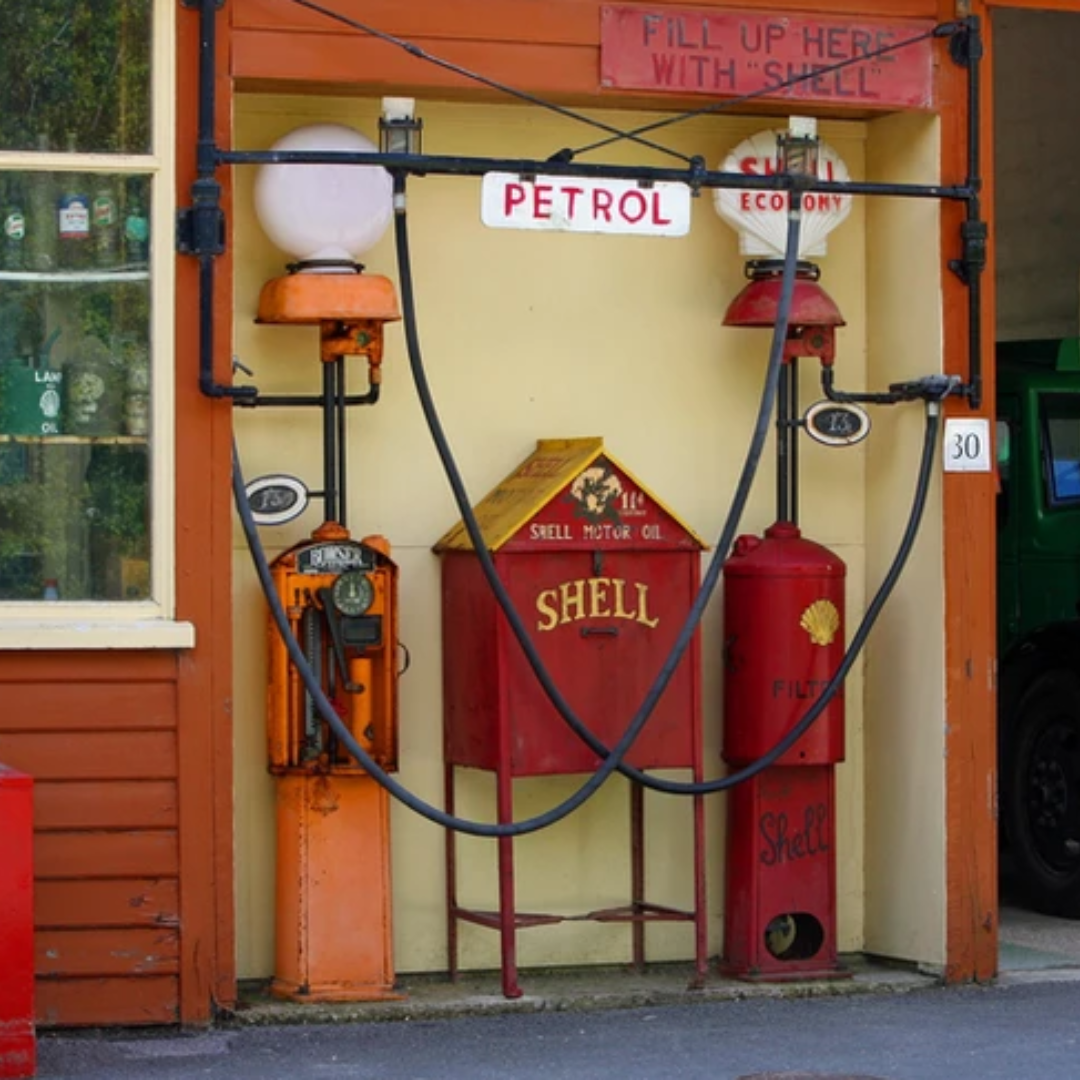The first roadside fuel station in the UK opened in November 1919 and was located just outside the village of Aldermaston in Berkshire. There is sadly no trace of this motoring landmark, and the site of the station is now a layby on the A4.
The Development of petrol stations in the UK and elsewhere
The Automobile Association (AA) ran the Aldermaston petrol station, one of several they opened in the 1920s. Before the opening of these stations, there were no specialist filling stations, and fuel was obtained in nine-litre cans from a number of different retail outlets. Pavement pumps were installed in some places in the years before 1919, but the AA led the way with the idea of selling fuel from dedicated roadside locations. Part of the rationale behind the AA’s venture into fuel locations was to sell benzole, a motor spirit derived from coal and tar seen as a patriotic alternative to petrol imported from communist Russia. The AA stations were not open to the general public, you had to be an AA member to use them, and they were a non-profit offering.

Other parts of the world had developed roadside stations well before the UK. The first record of a roadside petrol station anywhere in the world was in Wiesloch, Germany. Bertha Benz, the business partner and wife of the creator of the first internal combustion engine in a car, Karl Benz, refilled the tank of the first automobile on its maiden trip in 1888. In 1905 St Louis Missouri was the site of the first station in the USA. However, Reighard’s Gas Station in Altoona, Pennsylvania claims to be the oldest existing station in the US, dating from 1909.
The 1920s saw a significant increase in the number of petrol stations in the UK. By the end of the decade, there were over 28,000 petrol stations, with a peak of around 40,000 reached in 1967. Today there are 8,385 petrol stations in the UK, a significant drop in the number of stations but the locations are much larger, and they offer a far more extensive range of facilities.
What is the future of petrol stations?
RS Automotive in Takoma Park, Maryland, become the first petrol station in the USA to stop selling fossil fuels and replace its pumps with electric vehicle chargers. Many petrol stations in the UK have installed chargers, but none have taken the step of removing fuel pumps altogether. One hundred years on from the first roadside petrol station in the UK, we await the next phase of development in how we refuel our cars.
How much was it? Just to make us weep!
Surely they were two gallon cans. Or are we rewriting history now? Next we’ll be converting Groats & Doubloons to pence,
I remember back in the 90’s there were an extra 3 Petrol stations in my local area, and they were 24hour ones as well, as I remember walking to one of them in the freezing cold, in the early hours of the morning, to get another pack of cigarettes as I’d run out. 1 of the petrol stations is now a supermarket, 1 is a second hand car sales yard and the 3rd is a small housing development.
In the early 20th century, petrol was sold in 2 gallon cans, not 9 litres. Back in those days, all UK measurements (apart from electricity) were strictly imperial.
Well said, sir! This was 50 years before metrication…
The “metricators” are determined to wipe out all traces of Imperial measurements Martyn, even if it means altering history. One day they will try to get rid of Miles per Gallon!
What is not yet clear to me is now existing petrol stations will provide sufficient capacity once we are all-electric. At the moment it takes maybe 5 minutes to fill a car and pay for the petrol. There is adequate capacity to cope with this demand, but what happens when we all require, say, 30 minutes to recharge our cars, will we need 6 times as many service stations?